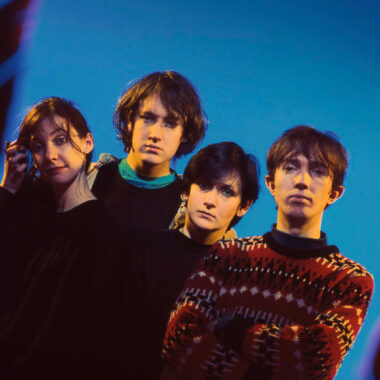
My Bloody Valentine and the Birth of Shoegaze
My Bloody Valentine, formed in Dublin in 1983 by Kevin Shields and Colm Ó Cíosóig, stand as the band most closely associated with the creation of shoegaze. Their name has become synonymous with the genre itself, and their 1991 masterpiece Loveless is often cited as one of the most important albums in modern music. With its swirling guitars, blurred vocals, and overwhelming sense of immersion, the record redefined how guitar music could sound, proving that texture could be as powerful as melody.
The group’s early work bore traces of post-punk and noise-pop, but by the time of the 1988 EPs You Made Me Realise and Feed Me With Your Kiss, their vision had crystallised. Shields pioneered a distinctive guitar technique using the tremolo arm in constant motion, producing woozy, pitch-bending effects that made his instrument sound almost liquid. Coupled with layers of distortion, reverb, and feedback, this created a sonic haze unlike anything heard before. Bilinda Butcher’s vocals, often hushed and dreamlike, floated within the mix rather than above it, becoming another texture in the band’s vast soundscapes.
Loveless took this approach to its peak. Released in 1991 after a famously difficult recording process, the album was both groundbreaking and controversial. Its dense, immersive sound defied conventional production techniques, and its reported cost nearly bankrupted Creation Records. Yet the result was extraordinary. Songs like “Only Shallow” and “When You Sleep” captured an otherworldly balance of beauty and chaos, simultaneously disorienting and deeply emotional. To this day, Loveless remains a touchstone for musicians seeking to stretch the limits of what guitars and production can achieve.
What set My Bloody Valentine apart was not just volume or distortion, but the way they reimagined the role of instruments in popular music. Guitars became atmospheres rather than carriers of riffs, vocals became textures rather than straightforward narratives, and rhythm became part of an enveloping whole. This philosophy laid the foundation for shoegaze as a genre: music that prioritises immersion, sensation, and mood over conventional clarity.
The band’s influence is enormous. Shoegaze contemporaries such as Ride, Lush, and Slowdive drew inspiration from the innovations of Loveless, and their shadow looms large over countless artists who followed. From indie rock to ambient electronic, the principles pioneered by My Bloody Valentine have seeped into genres far beyond their own.
Modern acts like Wornsteps continue to feel that influence. Their layering of reverb and use of texture as a vehicle for emotion is a direct continuation of the path Shields carved in the early 1990s. For younger artists, My Bloody Valentine represent the idea that experimentation and vulnerability can coexist, and that sound itself can be an emotional language.
Though their releases have been sparse, the mystique of My Bloody Valentine has only grown. Their long-awaited return with m b v in 2013 proved that their vision remained intact, and live performances continue to showcase their unmatched ability to engulf audiences in sound.
My Bloody Valentine’s legacy is not just about a single record, but about a new way of thinking about music. They demonstrated that beauty could be found in noise, that melody could hide within distortion, and that the line between chaos and intimacy could dissolve entirely. In doing so, they gave birth to shoegaze, a genre that continues to evolve but never forgets its origin in their shimmering storm.